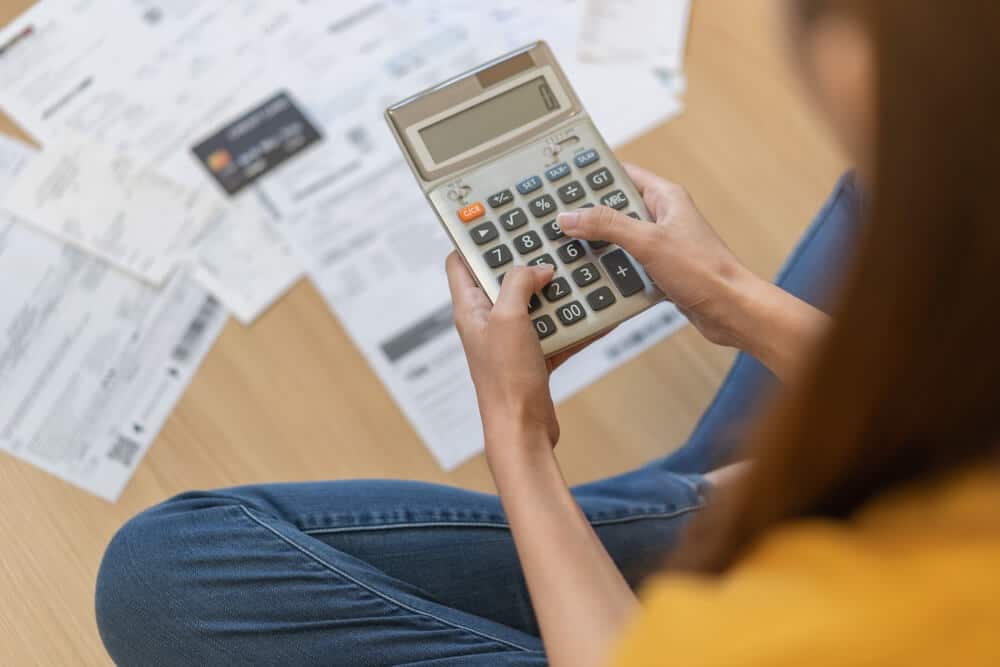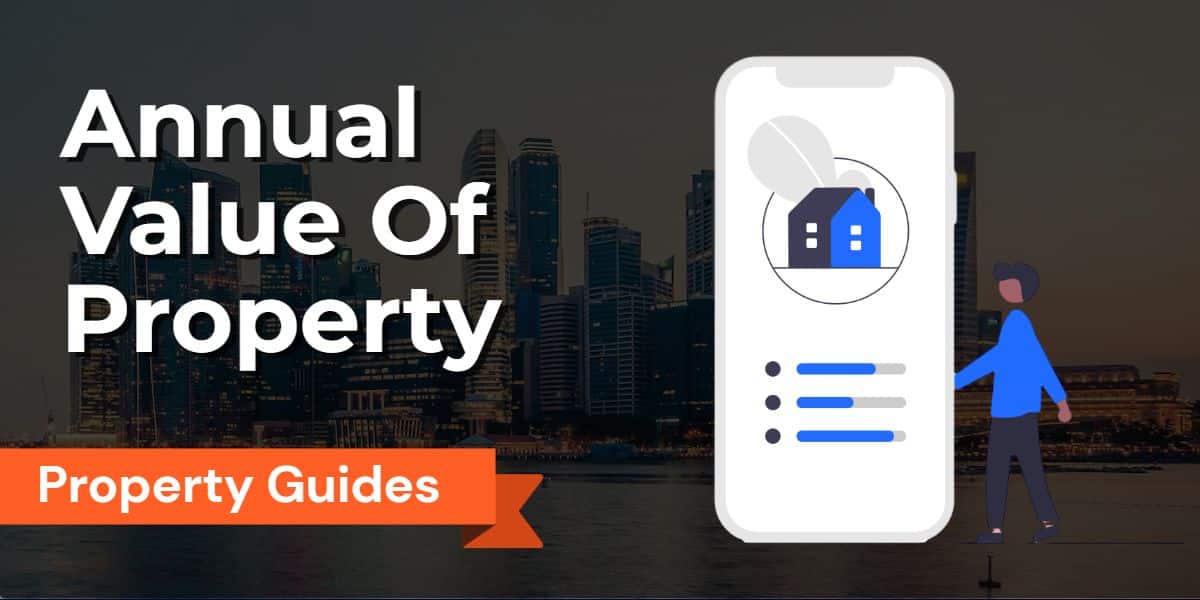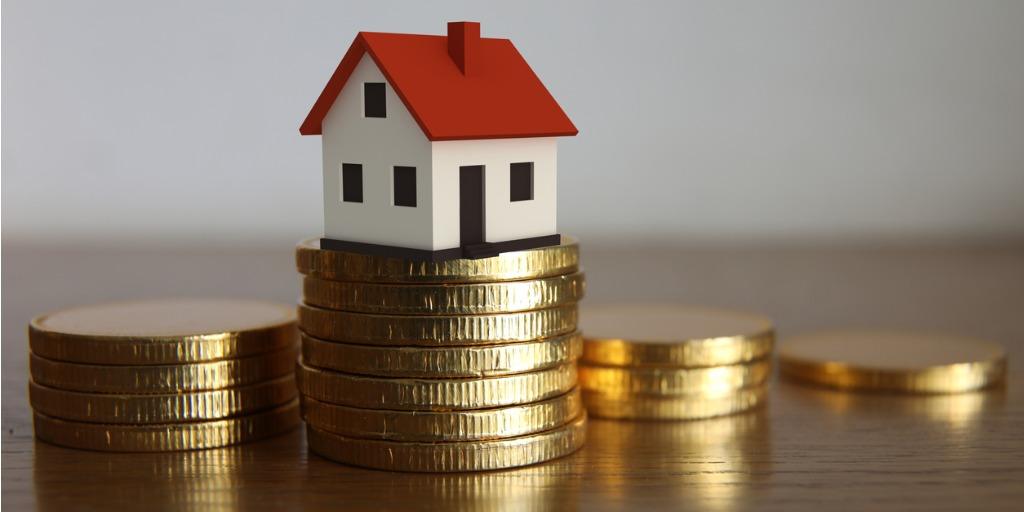
Are you planning to sell a property in Singapore?
If so, you may have encountered the term Seller’s Stamp Duty (SSD).
But what exactly is SSD, and why is it important?
SSD is a tax imposed on property sellers to discourage them from flipping their properties quickly.
This tax is part of the government’s efforts to regulate the property market and prevent speculation.
In this article, we’ll explore the purpose of SSD, who is liable to pay it, and its implications on property transactions and market dynamics.
Whether you’re a property owner or simply curious about Singapore’s property market, read more about SSD and its impact.
Key Takeaways
| Topic | Key Takeaway |
|---|---|
| Seller’s Stamp Duty (SSD) | – SSD is a tax imposed on property sellers in Singapore to discourage property speculation. |
| – It helps stabilize the property market and prevent property flipping. | |
| – SSD is payable when selling a property within the holding period. | |
| – The holding period is three years for residential properties and two years for others. | |
| Understanding the SSD Rate and Calculation | – The SSD rate varies based on the holding period, ranging from 12% to 0%. |
| – SSD is calculated based on the higher of the selling price or market value of the property. | |
| – If the property is sold at a loss, no SSD is payable. | |
| Applicable Scenarios: When SSD is payable | – SSD is payable when selling a property within the holding period. |
| – Exemptions include HDB flats, properties bought under the Residential Property Act, etc. | |
| SSD for Residential Properties | – SSD for residential properties has a three-year holding period. |
| – The SSD rate ranges from 12% to 4% based on the year of sale. | |
| SSD for Non-HDB Flats | – Non-HDB flats follow the same rules as residential properties for SSD. |
| SSD for HDB Flat Sellers or Transferors | – SSD for HDB flats follows the same rules as non-HDB flats. |
| – Additional resale levy may apply if sold within the minimum occupation period. | |
| Calculation of SSD: Selling Price or Market Value | – Sellers can choose to calculate SSD based on the selling price or market value. |
| – Market value calculation may result in higher SSD payable. | |
| Paying SSD: Procedures, Payment Modes, and Additional Costs | – SSD must be paid within 14 days through cash, cheque, or other accepted modes. |
| – Additional costs such as property tax, legal fees, and agent commissions may apply. | |
| Implications of SSD: Impact on Property Transactions and Market | – SSD has reduced property flipping and stabilized the residential property market. |
| – It has influenced the dynamics of property transactions and market conditions. | |
| SSD vs. Additional Buyer’s Stamp Duty (ABSD) | – SSD is paid by sellers, while ABSD is paid by buyers purchasing additional properties. |
| – ABSD applies to all property purchases, while SSD is specific to residential properties. | |
| SSD for Industrial Properties | – Industrial properties are subject to SSD with a minimum holding period of three years. |
| – SSD rate for industrial properties is a flat 15% for sales within the holding period. | |
| Exemptions and Exceptions: Cases Where SSD Is Not Payable | – Selling residential properties developed for commercial purposes is exempt from SSD. |
| – Transfer of property ownership due to death or bankruptcy is exempt from SSD. | |
| – Properties acquired before 30 Aug 2010 are exempt if sold after the three-year holding period. |
Introduction to Seller’s Stamp Duty (SSD) and Its Purpose
What is Seller’s Stamp Duty (SSD)?
SSD stands for Seller’s Stamp Duty, a tax property sellers must pay when they sell their properties.
It’s part of the property cooling measures introduced by the Singapore government to regulate the property market and prevent property speculation by investors.
What is the Purpose of SSD?
The purpose of SSD is to discourage property sellers from flipping their properties within a short period.
By imposing the duty, it aims to prevent speculative activities, which could drive up property prices and create a bubble in the market.
It also helps stabilize the property market by encouraging owners to hold onto their properties for longer.
Who is Liable to Pay SSD?
Property sellers in Singapore are liable to pay SSD when they sell their properties.
However, not all properties are subject to SSD.
The government has exempted some properties from the duty, and we’ll explore these exemptions later in this article.
Understanding the SSD Rate and How It Is Calculated

What is the SSD Rate?
The SSD rate varies depending on the holding period of the property.
The holding period refers to the duration between the date of purchase and the date of sale or disposal of the property.
The rate ranges from 12% for properties sold within the first year of purchase to 0% for properties sold after the third year.
How is SSD Calculated?
The SSD is calculated based on the higher the selling price or market value of the property, whichever is higher.
For example, if you sell your property at a price lower than the market value, you’ll still have to pay SSD based on the market value.
The duty is payable to the Inland Revenue Authority of Singapore (IRAS) within 14 days from the date of sale or disposal.
What Happens if SSD is Not Paid on Time?
If SSD is not paid on time, penalties and interest charges will occur.
You may also be barred from buying, selling, or transferring any other properties until the duty and all related liabilities and expenses are paid.
Applicable Scenarios: When Do You Need to Pay SSD?
When is SSD Payable?
SSD is payable when you sell your property within the holding period.
The holding period varies depending on the type of property you own.
For example, the holding period for residential properties is three years, while for industrial and commercial properties, it’s two years.
You don’t need to pay SSD if you sell your property after the holding period.
What Happens if You Sell Your Property Within the Holding Period?
If you sell your property within the holding period, you must pay SSD.
The amount payable will depend on the SSD rate and your property’s selling price or market value.
The IRAS has an online calculator that you can use to estimate your SSD liability.
What are the Exceptions to SSD?
The government has exempted some properties from SSD.
These include HDB flats, properties bought under the Residential Property Act, properties bought by foreigners or entities such as companies, and properties acquired through an option to purchase.
However, if you sell these exempted properties within the holding period, you may still be subject to various resale conditions and penalties.
SSD for Residential Properties: Exploring the Regulations and Guidelines

What are the Regulations for SSD on Residential Properties?
For residential properties, the SSD holding period is currently three years.
If you sell your residential property within the first three years of purchase, you must pay SSD.
The SSD rate for residential properties ranges from 12% if sold within the first year to 4% if sold within the third year.
How is SSD Calculated for Residential Properties?
The SSD for residential properties is calculated based on the higher the selling price or market value of the property, whichever is higher.
However, you won’t need to pay SSD if you sell your property at a loss.
For example, if you purchased your property at $1 million and sold it at $800,000, you won’t need to pay SSD as you sold it at a loss.
What Happens if I Sell My Property at a Loss?
You won’t need to pay SSD if you sell your property at a loss.
This is one of the exemptions to the SSD rules.
The IRAS defines a loss as the lower selling price or market value minus the purchase price or market value, whichever is lower.
Important Dates and Periods: From Date of Purchase to Date of Sale or Disposal
What are the Important Dates and Periods for SSD Calculation?
The important dates and periods to note for SSD calculation include the date of purchase, the holding period, and the date of sale or disposal.
The holding period refers to the duration between the date of purchase and the date of sale or removal of the property.
What Happens if I Extend the Holding Period?
If you extend the holding period of your property, you may be eligible for a lower SSD rate.
For example, if you open the holding period of your residential property from two years to three years, your SSD rate will be reduced from 8% to 4%.
How Does SSD Affect My Sale and Purchase Agreement (SPA)?
If you’re selling your property, you must consider SSD liability when negotiating the selling price with the buyer.
Your property agent can advise you to factor the SSD liability into the sale and purchase agreement (SPA).
SSD for Non-HDB Flats: Key Considerations and Requirements

What are the Requirements for SSD on Non-HDB Flats?
For non-HDB flats, the SSD rules apply in the same way as they do for residential properties.
The SSD holding period is three years, and the SSD rate ranges from 12% if sold within the first year to 4% if sold within the third year.
How is SSD Calculated for Non-HDB Flats?
The SSD for non-HDB flats is calculated based on the higher the selling price or market value of the property, whichever is higher.
The same rules apply if you sell your non-HDB flat at a loss – you won’t need to pay SSD.
What Happens if I Sell My Non-HDB Flat Within the Holding Period?
If you sell your non-HDB flat within the holding period, you’ll be required to pay SSD based on the SSD rate and the selling price or market value of the property.
As with all properties subject to SSD, it’s essential to factor in the liability when negotiating the sale and purchase of your non-HDB flat.
SSD for HDB Flat Sellers or Transferors: What You Should Know
What is the SSD Rate for HDB Flat Sellers or Transferors?
For HDB flat sellers or transferors, the SSD rules apply in the same way as they do for non-HDB flats.
The SSD holding period is three years, and the SSD rate ranges from 12% if sold within the first year to 4% within the third year.
What Happens if I Sell My HDB Flat within the Minimum Occupation Period (MOP)?
If you sell your HDB flat within the minimum occupation period (MOP), you must pay a resale levy to the HDB.
The SSD rules do not apply to HDB flats sold within the MOP.
What is the Role of the HDB in SSD for HDB Flat Sellers or Transferors?
The HDB is responsible for administering the resale levy on HDB flats.
The levy is a fee that HDB flat sellers or transferors must pay when selling their flats.
The levy amount varies depending on the size of the flat, and it’s payable to the HDB within 14 days from the date of sale.
Calculation of SSD: Selling Price or Market Value – Which One to Use?

Understanding the Concept of SSD
Before we delve into the details of SSD calculation, let us first understand the concept of this tax.
SSD is a duty imposed on residential property owners who sell their properties within a holding period of 3 years from the date of purchase or acquisition.
This tax aims to discourage property flipping, which could lead to speculation and volatility in the residential property market.
The amount of SSD payable depends on various factors, including the price or market value of the property.
Choosing Between Selling Price and Market Value
When calculating SSD, property sellers can choose between the selling price or the property’s market value.
The selling price is the actual price for the property, while the market value is an estimate of the property’s worth based on market conditions.
The SSD payable is usually higher when calculated based on the market value, as it considers the property’s potential appreciation.
Examples of SSD Calculations Based on Selling Price and Market Value
To illustrate the difference in SSD payable based on selling price and market value, let us consider the following examples:
- Example 1: Ms. Chan purchased a residential property for $800,000 in January 2020 and sold it for $900,000 in December 2020. The SSD payable based on the selling price is calculated as follows:
- Example 2: Mr. Tan purchased a residential property for $1 million in March 2017 and sold it for $1.3 million in October 2018. The SSD payable based on the selling price is calculated as follows:
Paying SSD: Procedures, Payment Modes, and Additional Costs
Procedures for Paying SSD
Once the SSD payable has been calculated, the seller must pay the duty within 14 days of accepting the option to purchase or signing the sale and purchase agreement, whichever is earlier.
The payment must be made through the e-Stamping Portal, an electronic system for stamp duties and other related fees.
Accepted Payment Modes for SSD
The accepted payment modes for SSD are cash, cheque, cashier’s order, or NETS.
It must be noted that payment must be made in Singapore dollars, rounded to the nearest dollar.
Additional Costs Associated with Paying SSD
In addition to SSD, sellers may incur other costs associated with property transactions, such as property tax, legal fees, and agent commissions.
It is essential to factor in these costs when considering the net proceeds from a property sale.
Implications of SSD: Impact on Property Transactions and Market Dynamics

Impact of SSD on Property Transactions
Since its introduction in 2010, SSD has had an impact on the residential property market in Singapore.
The duty has successfully curbed property flipping and discouraged speculation, as property owners must hold their properties for at least three years before selling them.
This has also led to a more stable and sustainable property market.
Impact of SSD on the Property Market
Due to its impact on property transactions, SSD has also influenced the overall dynamics of the residential property market.
The duty has led to a decrease in the number of property purchases and sales, especially in the short term.
However, this has not necessarily translated to reduced property prices, as the supply-demand dynamics continue to influence market conditions.
Examples of SSD Implications on Property Transactions and Market Dynamics
To illustrate the implications of SSD on property transactions and market dynamics, let us consider the following examples:
- Example 1: In March 2017, the government, under the Land Acquisitions Act, acquired a residential property from Mr Lim for $1. 2 million. Had Mr. Lim sold the property voluntarily, he would have been required to pay an SSD of $36,000 based on the selling price. However, since the government acquired the property, he was not required to pay SSD.
- Example 2: In June 2019, a group of flat owners under the Selective En Bloc Redevelopment Scheme (SERS) were required to return their flats to HDB for redevelopment. Even though they did not sell their apartments voluntarily, they still needed to pay SSD based on the market value of the apartments at the time of acquisition. This caused some controversy among flat owners, as they argued that they were not genuinely selling their flats.
SSD vs. Additional Buyer’s Stamp Duty (ABSD): Understanding the Differences
Definition and Purpose of ABSD
While SSD is a duty paid by residential property owners who sell their properties within a certain period, Additional Buyer’s Stamp Duty (ABSD) is a tax paid by property buyers who purchase additional properties in Singapore.
The purpose of ABSD is to discourage property speculation and curb demand for private properties while ensuring that Singaporeans have a fair chance to own their own homes.
Comparison of SSD and ABSD
While SSD and ABSD have similar objectives of curbing property speculation and volatility in the property market, they have different implications for buyers and sellers.
While SSD is a cost incurred by sellers, ABSD is a cost incurred by buyers.
SSD is also specific to residential properties, while ABSD applies to all property purchases, including non-residential properties.
When to Pay ABSD Instead of SSD
While SSD and ABSD are distinct taxes, there may be instances where property buyers or sellers may need to pay both.
For example, if a residential property owner sells his property within the 3-year holding period and then purchases an additional property, he must pay both SSD and ABSD.
SSD for Industrial Properties: Overview and Applicability

Understanding Industrial Properties in Singapore
In addition to residential and non-residential properties, Singapore also has a category of industrial properties.
These include factories, warehouses, and industrial land.
Overview of SSD for Industrial Properties
Similar to residential properties, industrial properties are also subject to SSD.
However, the minimum holding period for industrial properties differs from residential properties.
The minimum holding period for industrial properties is three years, while for residential properties, it is one year.
Applicability of SSD for Industrial Properties
The SSD payable for industrial properties is also calculated based on the selling price or the market value of the property, whichever is higher.
However, the rate of SSD for industrial properties is different from that of residential properties, at a flat rate of 15% for properties sold within the minimum holding period.
Exemptions and Exceptions: Cases Where SSD Is Not Payable
SSD is not always payable when selling a residential property in Singapore.
In general, SSD is only payable when the seller disposes of a residential property they have held for less than three years.
However, certain circumstances can exempt the seller from paying SSD, including selling residential properties developed for commercial purposes.
Disposing of Properties for Commercial Purposes
When people sell their residential property for commercial use, they are not required to dispose of it; therefore, SSD is not payable.
The government reasons that selling such properties for commercial purposes would help drive the economy; hence, exempting it from SSD supports businesses.
Transfer of Property Ownership due to Death or Bankruptcy
Suppose the transfer of ownership of a residential property occurs due to death or bankruptcy.
In that case, the owner or inheritor of the inherited HDB flat is not subject to the execution of SSD as a tax.
It is important to remember that ownership transferred outside of a will or through intestacy of law can still be subject to other taxes or legal battles, but SSD would not be one of them.
Properties Acquired before 30 Aug 2010
Properties that sellers or transferors purchased before 30 Aug 2010 are exempt from SSD if they sell their residential property after the three-year holding period as they were acquired before the law’s introduction.
They will only have to pay SSD once they receive another residential property after the law’s implementation date, which includes a partial interest in the residential.
When a seller owns an HDB flat, they will be required to dispose of it if they wish to sell their property and will be subject to SSD if they do so within the three-year holding period after obtaining it.
The same rule applies if the seller acquires another HDB flat or property within Singapore after its release.
SSD and Property Flipping: Addressing Concerns and Misconceptions

What is Property Flipping?
Property flipping is purchasing a property to sell within a short period for a profit.
Buying a property with the specific intention of flipping it is a speculative practice, and it is believed to contribute to property market volatility by driving prices beyond their intrinsic value.
SSD and Property Flipping
SSD, in cases of property flipping, is a tax payable when selling the property within three years of purchasing it.
Sellers must pay SSD when selling residential properties within the holding period to control real estate speculation and promote stability within the property market.
Misconceptions About SSD and Property Flipping
A misconception about SSD is that it affects all sellers, regardless of the holding period.
Another misconception is that SSD applies only to those who buy and sell properties repeatedly different, but that is not the case.
The tax only applies to those who sell their residential properties within three years of purchasing them.
SSD and the Future: Trends, Outlook, and Implications for Property Owners and Investors
Recent Developments and Trends in the Property Market
Following the implementation of SSD, the property market has seen significant changes.
Transaction volumes of residential properties decreased as more sellers opted to hold their properties due to the additional cost of SSD.
This resulted in a decrease in property flipping, which helped to stabilize prices within the market.
More recently, the COVID-19 pandemic has caused a decline in the property rental market.
Still, the sales market saw increased transactions in demand, where property investment offers a haven for investments that will yield high returns.
Outlook and Implications for Property Owners and Investors
SSD has effectively curbed property speculation, and its impact on reducing flipping and stabilizing prices within the property market has been evident.
Many investors, especially those looking for a medium to long-term investment, should consider the additional cost of SSD and how it would affect the sale of their property.
A conservative approach in the property market is relevant, especially during the COVID-19 period when market uncertainties arose.
SSD and the Government’s Vision for Singapore’s Property Market
The government has committed to stabilizing the property market through measures such as SSD by financing affordable housing options and exercising control and licensing over licensed housing developers.
The outlook for the property market is positive and should be viewed as a long-term investment because of Singapore’s growing economy and political stability.
The government’s vision for Singapore’s property market is a stable and affordable market that allows people to own a home.
Conclusion
In conclusion, Seller’s Stamp Duty (SSD) is a tax imposed on property sellers in Singapore to discourage property flipping and speculative activities.
The duty aims to stabilize the property market by encouraging owners to hold onto their properties for extended periods.
SSD rates vary based on the holding period and are calculated based on the property’s higher selling price or market value.
While SSD applies to most residential and non-residential properties, there are exemptions for specific properties and circumstances.
It is essential for property sellers to factor in SSD when negotiating the sale and purchase of their properties.
To explore SSD and related topics, we invite you to check out our other blog articles on property regulations and guidelines.
Frequently Asked Questions
What is Sellers Stamp Duty or SSD?
Sellers Stamp Duty (SSD) is a tax imposed on sellers or transferors who dispose of their residential property in Singapore which was bought or acquired on or after 14 March 2017 and sold within the holding period specified by the Inland Revenue Authority of Singapore (IRAS).
The objective of SSD is to discourage property flipping.
What is the holding period for SSD?
The holding period for SSD is the duration between the date of purchase or acquisition of the property and the date of disposal or sale.
How does SSD impact property sellers in Singapore?
If you sell your property within the holding period, SSD will be payable to IRAS.
The amount of SSD payable depends on the holding period and the property’s market value at the time of its purchase or acquisition.
What is the SSD payable for property sellers?
The amount of SSD payable for property sellers depends on the holding period and the property’s market value at the time of its purchase or acquisition.
The SSD payable is calculated based on a tiered approach, whereby the SSD rate is higher for properties sold within a shorter holding period.
Is SSD payable on all types of residential properties?
SSD is payable on all residential properties acquired on or after 14 March 2017 and sold within the specified holding period.
What if I inherit an HDB flat and want to dispose of it?
If you inherit an HDB flat and dispose of it within the SSD holding period, SSD will be payable to IRAS.
However, if you own two HDB flats and dispose of either one, SSD will not be expected.
Is there any exemption for SSD?
There are no exemptions for SSD, except when you buy a new flat directly from the Housing and Development Board (HDB) or under the Selective En Bloc Redevelopment Scheme (SERS).
What if a flat was bought under HDB ownership after repossession?
If a flat was bought under HDB ownership due to re-possession by HDB, SSD will not be payable if the inherited HDB flat is disposed of within six months of the purchase date.
How is the SSD payable calculated in Singapore?
The SSD payable is calculated based on a tiered approach, whereby the SSD rate is higher for properties sold within a shorter holding period.
The SSD rate is 12% if the property is sold within a year, 8% within two years, and 4% within three years, and no SSD will be payable if the property is sold after three years from the date of purchase or acquisition.




















